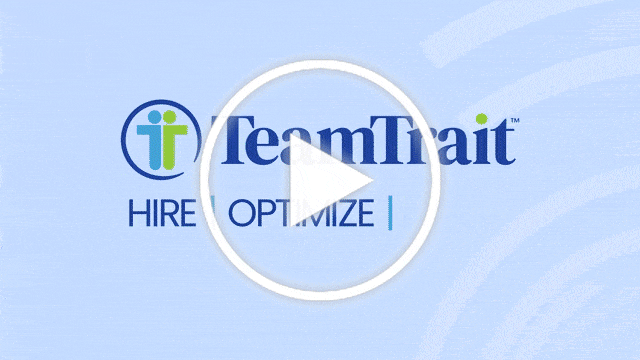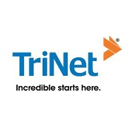
Workforce Analytics for Employee Retention
BIG FIVE
PERSONALITY
ASSESSMENT
DISC
BEHAVIORIAL
ASSESSMENT
MOTIVATORS
ASSESSMENT
HVP
VALUES
ASSESSMENT
ACUMEN
AND RETENTION
ASSESSMENTS
TeamTrait is the best alternative psychometric assessment and mindset testing platform for keeping your best team members.
Know Your Team, So You Can Keep Your Team
WORK
TRAITS
MOTIVATIONAL
TRAITS
DECISION-MAKING
TRAITS
CAREER
DIRECTION
COACHABILITY
LEADERSHIP
TRAITS
WORK TRAITS
CAREER DIRECTION
COACHABILITY
MOTIVATION
DECISION MAKING
LEADERSHIP TRAITS
150+ PROFESSIONAL MINDSET TRAITS IN JUST 20 MINUTES
PLUS OUR EXCLUSIVE BEHAVIORAL RETENTION ASSESSMENT
Poach-Proof Your Best Employees

CAREER GROWTH
- Provide a clear career path for your ambitious rockstars so they won't need to go elsewhere using our exclusive Four Fits™ Simulator
- Play what if scenarios with different team constructs, job roles or team leaders
- Provide better developmental coaching using TeamTrait's personalized Coaching Tips
- Identify who has the mindset for leadership

EMPLOYEE EXPERIENCE
- Discover possible areas of tension with their manager so they can be avoided or handled proactively
- Align them with their ideal work environment or assignments where they will perform their best
- Discover what really motivates them for greater performance and satisfaction
- Reduce what keeps team members from excelling when under stress

RETENTION ASSESSMENT
- Identify potential flight risks using TeamTrait's exclusive Behavioral Retention Assessment
- Uncover potential weak spots that could leave you vulnerable to poaching of your best talent
-
Address key concerns faster, while you still have a chance to
- Avoid team disruption from attrition, mandatory hiring freezes
KEEP YOUR BEST TALENT.
MAKE DECISIONS BASED ON THEIR LIKELY BEHAVIOR, NOT THEIR BEST BEHAVIOR.
Get a Demo and 2 Free Profiles
See for yourself how TeamTrait gives you more certainty when hiring, motivating and retaining your best team members.
NO COMMITMENT, NO CREDIT CARD REQUIRED
WE'LL NEVER SELL YOUR INFO!
Convenient HRIS/ATS Integrations
ActiveCampaign
Workforce Now
Bamboo HR
Freshworks
Greenhouse
Gusto
Hubspot
Humaans
Lever
Microsoft Dynamics HR
Officient
Namely
Personio
Recruitee
Rippling
Run by ADP
SAP Success Factors
Sage HR
Salesforce
TriNet
Teamtailor
Workable
UKG Pro
Workday
Zoho People
Excel Import
Proven Effective. Backed by Brain Science.
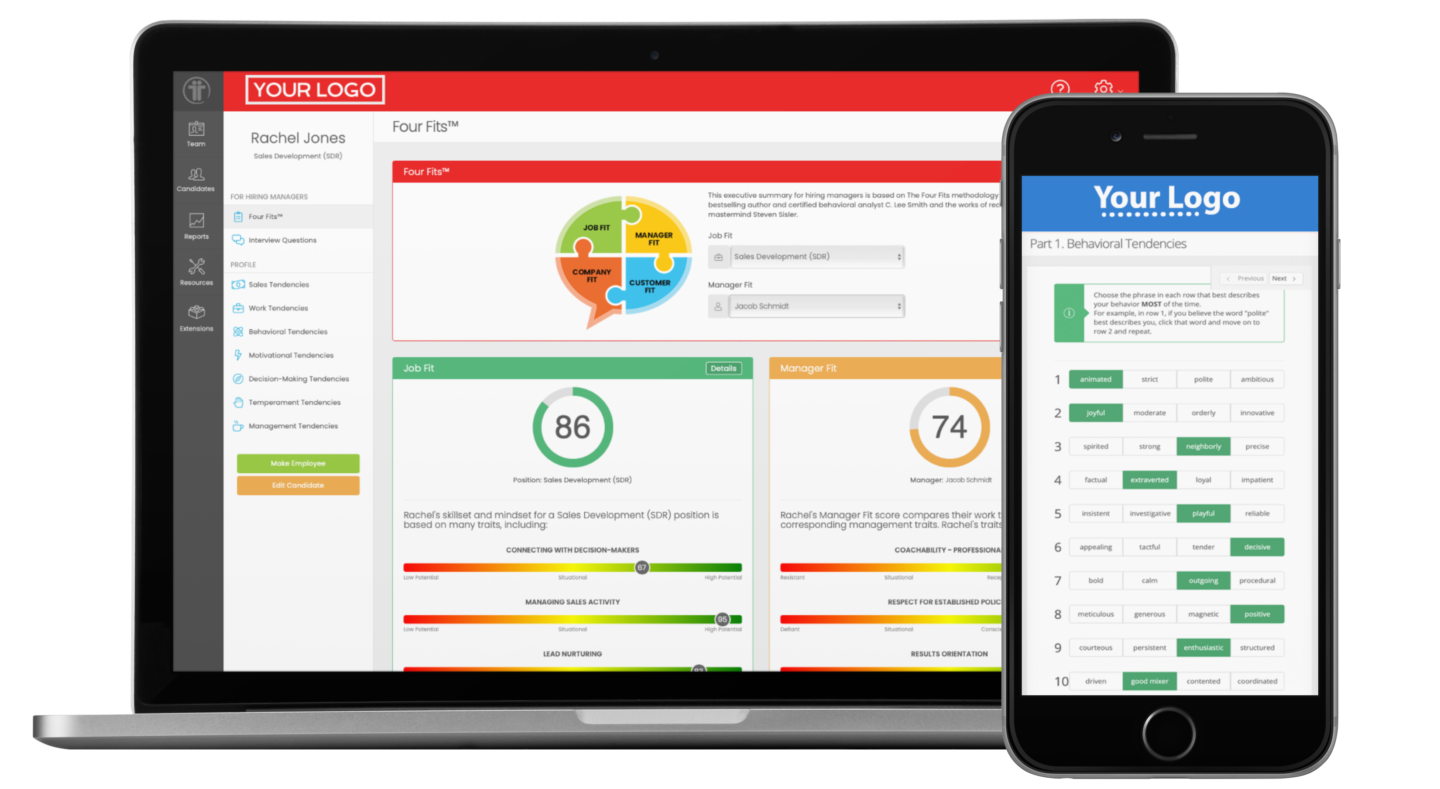
BETTER PSYCHOMETRIC ASSESSMENTS FOR KEEPING HIGH-PERFORMING EMPLOYEES
TEAMTRAIT AUTOMATES BEHAVIORAL ASSESSMENT TESTING AND INSTANTLY REPORTS FINDINGS
Why Psychographics Matter in Retention
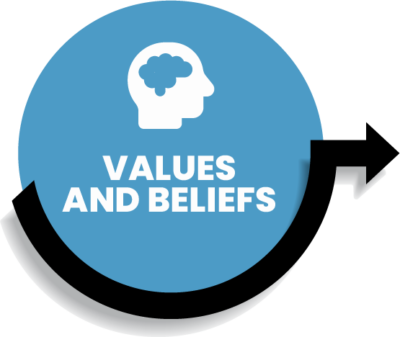
- Employee retention starts from day one by understanding each team member's Values and Beliefs
- Values and Beliefs are best measured by the Hartman Value Profile (HVP)
- Reveals empathy, leniency, self direction and critical thinking
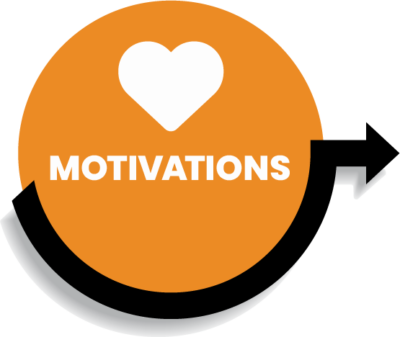
- Values and Beliefs lead to motivation
- Personal motivations are measured by the Motivators Assessment
- Employee retention increases when personal desires are fulfilled in their ideal work environment
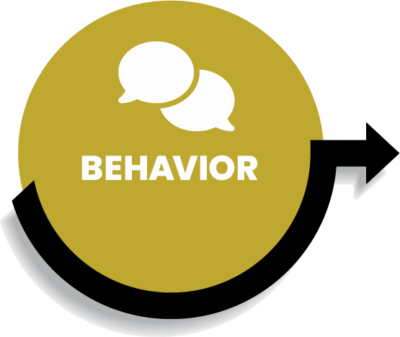
- Motivations lead to behavior
- Likely behavior measured by DISC
- Behavior is often different under stress
- Team leaders should reinforce good behaviors, not just correct the bad
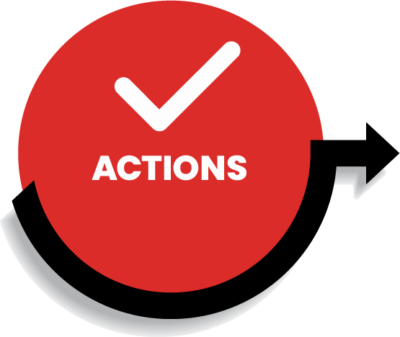
- Behavior leads to actions and activity
- Measured by reports, CRM, other systems
- Most managers coach here, instead of what led to the actions
- Appreciation should be shown for above-and-beyond actions

- Actions lead to results
- Measured by profit, other KPIs
- What's most important to C‑Suite and shareholders works down to everyone
- Positive results should be celebrated!
Copyright 2022 by workforce management strategist C. Lee Smith
Hartman Values Profile (HVP) Assessment
Will they exaggerate the positive or overlook the negative? Do they have empathy for others? Are they escaping their old job? TeamTrait employment tests use an updated version of the Hartman Values Profile (HVP) to reveal what team members value at the core level and how they are likely to make decisions on the job. TeamTrait reveals:
- Role Awareness: How well do they understand and appreciate their place and function at work? This gives them a sense of confidence and satisfaction in their role, as well as a sense of contribution. These are critical in employee retention.
- Self-Direction: Are they looking for a future in your company or looking for a way out? A person's self-direction indicates whether they have a clear vision of their future. It also measures their confidence in their future.
- Empathy: How well can they relate to and work with other people? How much do they care about other people's needs? A person's empathetic capability is vital for success in leadership, sales and other customer-facing positions.
- Practical Thinking: Do they see what to do when prioritizing activities and projects, and when categorizing things? Do they understand what needs to be done and use practical ways of carrying out necessary tasks? A person's practical thinking capability indicates their capacity for practical judgment toward doing things and making progress.
- Structured Thinking: Do they understand the rules of the game, such as important protocols, procedures, authorities, forecasts, budgets, fixed rules and standards? Are they self-regulated? Or do they tend to undermine the rules or find a work-around? A person's structured thinking represents their ability for seeing and appreciating systems, order, and conventional thinking and planning.
- Self-Esteem: Are they cognizant of their wants, needs, and desires? Do they feel worthy of what they have? A person's self-esteem indicates their capacity for seeing their value, for seeing and appreciating their abilities and limitations without preconceived stipulations and expectations. It also indicates their mind is focused (reasoning) on their strengths or their shortcomings. Self-esteem impacts the decisions they make about self-care and their own best interest.
Motivators Assessment
What motivates them to take action? Money? Independence? Power? Helping others? TeamTrait uses a unique assessment from behavioral mastermind Steven Sisler to show you which of the 7 primary motivators drive each candidate. TeamTrait behavioral assessment for employment indicates one's desire for:
- Originality – Grounded vs. Unconventional
- Efficiency – Competitive vs. Complacent
- Individuality – Distinctive vs. Blending In
- Power – Controlling vs. Submissive
- Sacrifice – Conditional vs. Unconditional
- Compliance – Structured vs. Unstructured
- Curiosity – Intellectual vs. Intuitive
Patterns from these primary motivators reveal what's really important in retaining your best team members. Are you fulfilling their tops internal desires? These can include their desire/need to:
- Win or Make Money
- Work Autonomously
- Learn New Things
- Be Self Reliant
- Have Authority or Control
- Be Creative
- Serve or Support Others
Behavioral Assessment
What energizes your candidate? Making things happen? Attracting people to them? TeamTrait uses DISC to measures behavioral tendencies like these for each candidate. It also reveals how they act when under the stress of a deadline or demanding customer.
DISC is a universally applicable measurement of needs-motivated, observable behavior and emotion. It has been proven effective as a measurement of Natural Behavior. DISC is also superior to personality tests for measuring likely behavior.
DISC is NOT a measure of intelligence, skills, education or experience, or an indicator of values. DISC groups levels of behavior into four general categories:
- D — Dominance or Directive Approach: Measures how people address problems and challenges
- I — Influence or Interactive Approach: Measures how people handle situations involving people and contacts
- S — Steadiness or Supportive Approach: Measures how people demonstrate pace and consistency
- C — Compliance or Corrective Approach: Measures how people react to procedure and constraints
There are no good or bad behavior styles. Each style of behavior has strengths and areas for improvement.
Natural Behavior
Natural behavior describes a person's state of being without any interference from others. It is what our brain has generally learned to do over the years to best survive and succeed under a variety of circumstances and differing environments. It is called "natural" because it is an automatic approach to life unless specific adjustments need to be made to succeed in a certain environment.
Natural behavior can also be thought of as a person's unconscious "character" base. Although it is important to note that psychometric assessments are not reliable in measuring integrity.
Natural Behavior reflects people's natural, consistent, and available emotional energy for interacting with the world.
Intentional Behavior
Intentional behavior is the emotional and behavioral adjustments your brain deliberately makes in order to successfully live within a shared existence. In the work setting, it is how a person changes their behavior in order to be appropriate and successful.
Our choice of behavior reflects our present solution for reconciling the two forces that push toward a separate existence and pull toward a shared existence within the world. This intended selection of behaviors takes place at the conscious level. Intentions can be altered, which is why change begins at the conscious level.
Natural behavior describes how people act when they are alone or looking out for themselves. Intentional behavior is how they act around other people, in a social setting or when looking out for others.
